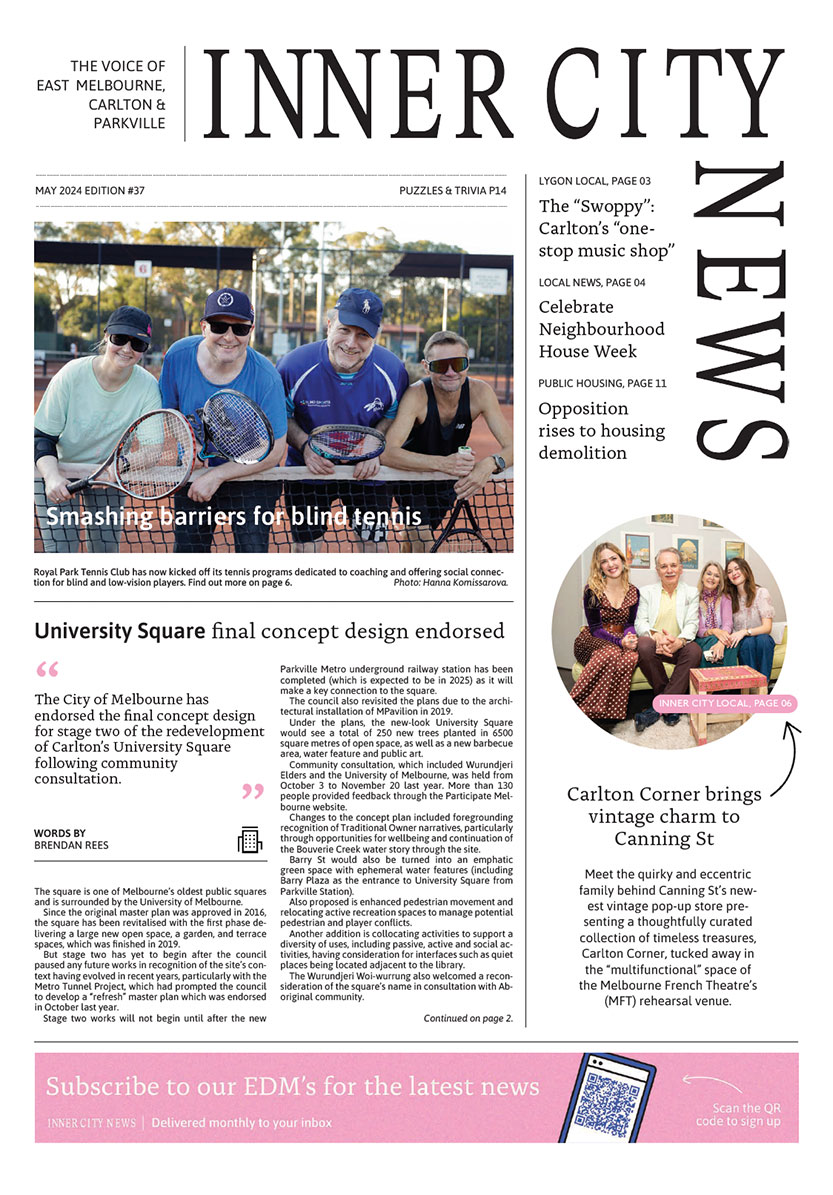Larrikin gangs in Carlton
From the 1860s through to the early decades of the 20th century, the streets of Melbourne and its inner suburbs were plagued by gangs of young men known as “larrikins”.
Their behaviour ranged from irreverent pranks to obscene language, larceny, hurling stones, brawling, drunkenness and assault. “Pushes”, the larrikin word for gangs, were endemic in town and in nearby suburbs.
Among the more notorious gangs in Carlton was one known as the “Emu Push” that centred around the Lincoln Square area. On the night of March 11, 1910, the members of the “Emu Push” and the “North Melbourne Push” had a pitched battle in Victoria St near the market, fighting with pickets, bicycle chains and other weapons. After the fight a group from the Emu Push marched through Carlton, knocking down anyone in their way – until they saw the police, whereupon they scattered in all directions. Later they went into the city and assaulted a constable.
Street fights between individual “push” members were also common. In 1910, two police constables came across a stand-up street fight on the corner of Pelham and Cardigan streets, Carlton, watched by a large crowd. This was between a member of the Emu Push and one from the Cardigan Street Push.
When the constables arrived on the scene the crowd dispersed. But soon after, the fight resumed down the street on the corner of Cardigan and Queensberry streets. The police arrested the two fighters who continued to swear at them all the way to the police station.
Larrikins were defiant of the police and were not above assaulting a patrolling constable. On Christmas Day 1916 a constable had his face severely injured by a gang of larrikins wielding bottles and ended up the police hospital. It seems that a group of 15 or 20 men were creating a disturbance near Lincoln Square. When the constable ordered them to move away, a 20-year-old named Pearson threw a bottle at him. The policeman tackled him and brought him to the ground, but while they were struggling, Pearson struck him on the face causing a severe injury.
According to a former Carlton policeman who served in the First World War many of the men associated with the “Emus” eventually turned into useful citizens.
“I saw a number of them in France,” he said in 1919. “And they were fine fellows. They did their bit well and proved themselves great soldiers.”
After the war, public attitudes towards larrikins changed and softened. Some commentators have suggested that this was because the growth of more serious crime and criminal gangs in Melbourne in the 1920s made larrikin street fights appear less serious. •

Carlton Corner brings vintage charm to Canning St




 Download the Latest Edition
Download the Latest Edition